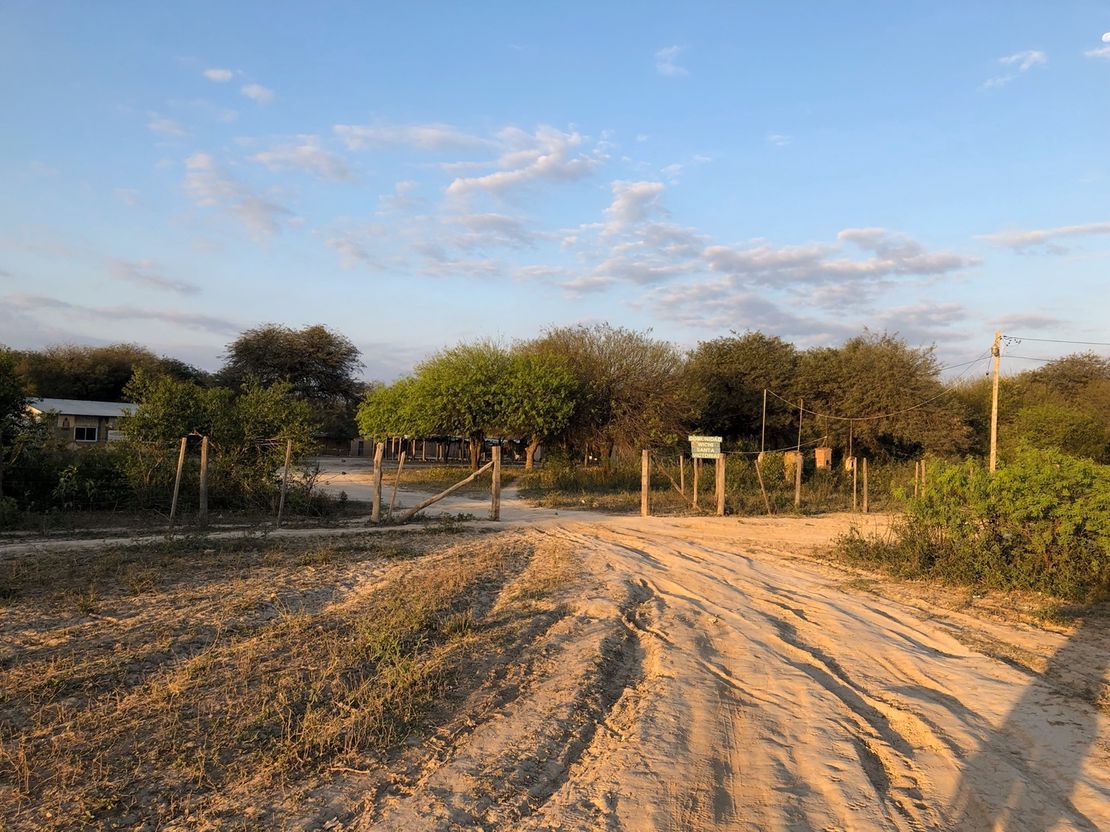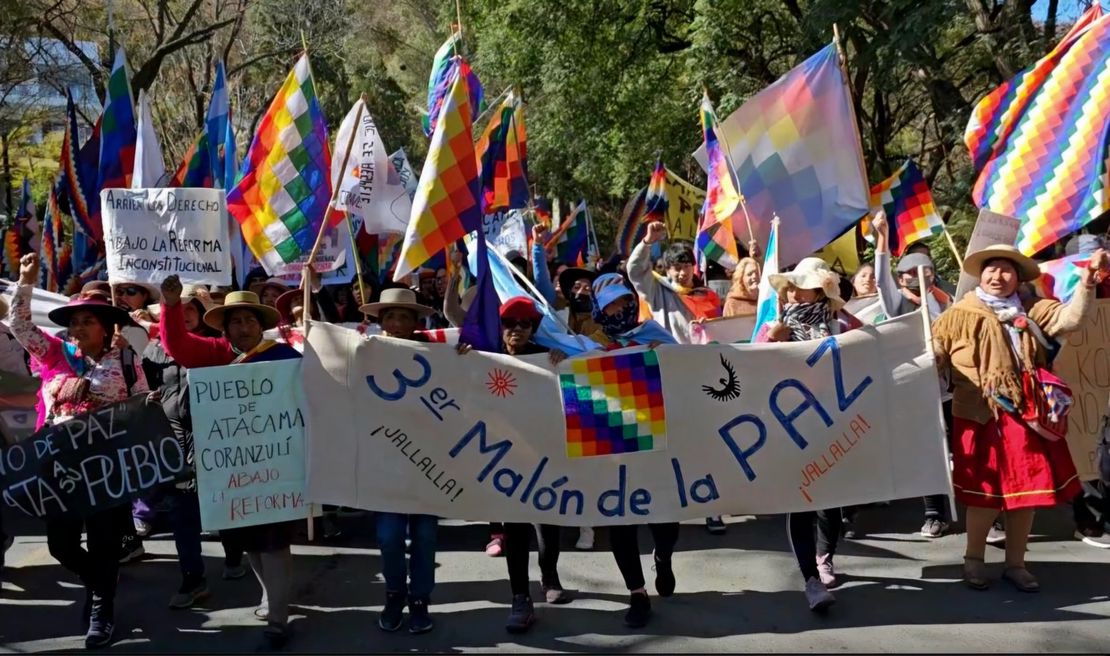Abstract
In the ongoing battle for natural resources in Latin America, local communities are taking a stand against mining projects. Surprisingly, animals and plants in Chile, Colombia, and Ecuador have also played crucial roles in the legal cases, along with the local communities. These examples shed light on the unique connections between judicial decisions and non-human entities, demonstrating how the law is evolving to embrace the natural world in a movement towards protecting the multiple worlds we inhabit.
Snapshots of an unfolding tale
In 2022, during a hearing at the Second Environmental Court in Chile, a lawyer representing a community collective in Putaendo raised concerns about the exclusion of the Andean cat from the environmental impact statement prepared by a mining company for a copper exploration project. The environmental impact statement, crucial for obtaining a mining title, was contested by local community members who opposed the mining company’s activities that significantly threatened the Andean cat in Chile. The heavy drilling and mining vibrations caused by the mining activities had systematically pushed the Andean cat out of its habitat. Additionally, severe water droughts resulting from the mining activities over the past decade have made it extremely difficult for the Andean cat to thrive in this location. The community claimed that the cat’s protection was necessary due to its biological value and raised the need for legal systems to adapt to the natural world.
Latin America is a dynamic region where local communities are persistently fighting against mining projects, leading to a complex context of resistance and collaboration with the mining industry. Over the years, these communities have utilized various strategies, ranging from legal battles to police confrontations, to assert their sovereignty over their natural resources. The story is not linear, but instead characterized by an unceasing contestation of resource control. While some communities align themselves with the mining corporations, others vehemently oppose them. This study captures instances of a region at the crossroads of economic development and ecological preservation, where communities and industries are in an ongoing struggle for control over resources and for the right to a healthy and respectful way of living.
In the last few decades, approaches to the Rights of Nature and Earth Jurisprudence have been addressing urgent environmental issues on a global scale. Latin America has emerged as a key player in this process, making significant contributions. This signifies a paradigm shift, where the concept of rights is no longer the exclusive domain of humans but it extends also to the natural world humans coexist with. This is often referred to as the Rights of Nature, a term that encompasses both legal philosophy and specific laws that acknowledge ecosystems as entities with rights. 1 For instance, in their constitutional reforms of 2008 and 2009, Ecuador and Bolivia, respectively have led the way in recognizing Pachamama (or Mother Earth) as a rights-bearing entity.2
These ideas recognize, for example, that the boundary between humans and nature is not always clear-cut. Considering that humans are 70% water, it makes sense to think of the streams, rivers, and ecosystems from which we drink as extensions of ourselves and vice versa. As of 2021, around 30 countries have implemented laws or legal decisions that recognize the rights of non-human entities. The particulars of these legal provisions vary by region and country. This shift is driven by the need to protect biodiversity, promote a healthy environment, and acknowledge alternative ways of coexisting with our world.3
Rights of Nature and Dispossessions
Earth Jurisprudence emphasizes the need for legal systems to adapt to the natural world rather than forcing the natural world to conform to legal frameworks. One issue that legal systems address today is their tendency to view nature in a narrow and individualized manner rather than as an interconnected ecosystem. For example, a river is often seen as a discrete entity rather than part of a larger ecosystem that includes the flora, fauna, clouds, rain, runoff, and toxins that are directly part of or in a cycle with the river. Similarly, when assigning rights to nature, different natural elements are often treated as separate subjects with individual rights, leading to a fragmented landscape of isolated rights. Claire Duboscq’s project on the rights of nature in Colombia, which she calls a “judicial factory” for producing nature’s rights, illustrates this concept.4 Therefore, it’s not just about the number of legal decisions made by the courts but rather about how we understand how different worlds (human and non-human) coexist in the same space.5
As we examine court decisions in which judges grant natural entities rights under the Rights of Nature, we are considering new questions and discovering new dimensions for establishing a legal framework. This framework aims to recognize the interconnectedness between people and non-human beings with whom we share our lives. When we consider the history of dispossessions, the first question to ask is, what is being dispossessed? The relationships between humans and other beings highlight that dispossessions are not limited to the specific location where a particular form of extraction or exclusion occurs. As demonstrated by the cases presented here, the impact of mineral extraction in one area can significantly affect water resources in another. In other words, dispossessions can take place across different locations, without regard to boundaries. This perspective suggests that dispossessions are a process of circulations and transfers, similar to what is described by the concept of translocality. 6 What is seemingly grounded in mineral extraction projects is actually connected to various locations and different environmental, economic, political, and other material realities. This is because ecosystems consist of a community of organisms and their physical environment interacting with each other. This is at the core of what the Rights of Nature seeks to acknowledge. And new kinds of questions arise when we approach these legal cases from the perspective of the species, such as the Andean cat.
A Look into Three Different Cases
Three cases demonstrate different approaches to balancing various interests and needs to preserve a common habitat. They all share a similar strategy: the involvement of non-humans in the legal process. These cases are particularly relevant because they show how we can adapt and transform our practices through collaborative efforts among scientists, communities, animals, and plants to safeguard shared existence. Specifically, these cases emphasize the bonds formed with non-humans and the environment, as everyday activities unveil new solidarities. For instance, the identification of a new orchid species shifted the power dynamics in a legal dispute against a mining project that was impacting water sources for a community in Colombia. The text emphasizes the connection between humans and the environment. It points out that anything that affects the orchid will also have an impact on people. Therefore, the orchid is not just a plant; it shares a habitat and life with the surrounding community. Hence, preserving the species is also preserving own existence.
For over 30 years, the people of Intag Valley in Ecuador have been fighting to protect their land from mining operations. Recently, their efforts led to a significant victory in the courts, credited to rediscovering an extinct frog. This discovery played a crucial role in halting the mining license for the Llurimagua copper mining project. Locals, scientists, and organizations have worked tirelessly to preserve the cloud forest, an essential habitat for the longnose harlequin frog. After a lengthy legal battle, the Provincial Court ruled in favor of those who had stood up for the frog and its emblematic ecosystem. It’s easy to assume that the evidence presented changed the outcome. Yet, it is important to note that when we consider the needs of both people and species, and their shared environments, we are acknowledging the coexistence of multiple worlds. This example serves to illustrate the approach of recognizing the Rights of Nature.
Like in a game of chess, when we analyze judicial cases, we find that the board is constantly changing. Each move signals a shift in strategy, with players adjusting their pieces for what comes next. One player’s turn ends when the clock strikes, while the other seizes the moment to make their move. In reality, however, the game never ends. The clock never stops. The stories of legal cases embody a continuous negotiation and an array of possibilities at each move and transition. I will share snapshots of three dynamic journeys where scientists, community members, animals, plants, and scholars collaborate to safeguard their homes and lives. I will momentarily pause the clock to give you a glimpse of these tales. Although these cases may be very different at the present time, they contain significant similarities I will highlight.
To explore the cases, please refer to “In the Quest for the Andean Cat”, “Once Upon a time an Orchid”, and “A Frog in the Cloud Forest” to learn more about each context.
References
Appadurai, Arjun. 1996. Modernity at Large: Cultural Dimensions of Globalizations. Minneapolis: University of Minnesota Press.
Berros, María Valeria. 2021. “Challenges for the Implementation of the Rights of Nature: Ecuador and Bolivia as the First Instances of an Expanding Movement.” Latin American Perspectives 48 (3): 192–205. https://doi.org/10.1177/0094582X211004898.
de la Cadena, Marisol, and Mario Blaser, eds. 2018. A World of Many Worlds. Durham: Duke University Press.
Kauffman, Craig M., and Pamela Martin. 2021. The Politics of Rights of Nature: Strategies for Building a More Sustainable Future. Cambridge: Massachusetts Institute of Technology.
Maldonado, Daniel Bonilla. 2019. “Environmental Radical Constitutionalism and Cultural Diversity in Latin America: The Rights of Nature and Buen Vivir in Ecuador and Bolivia.” Revista Derecho Del Estado, no. 42 (January): 3–23. https://doi.org/10.18601/01229893.n42.01.
Porst, Luise, and Patrick Sakdapolrak. 2017. “How Scale Matters in Translocality: Uses and Potentials of Scale in Translocal Research.” Erdkunde 71 (2): 111–26. https://doi.org/10.3112/erdkunde.2017.02.02.
Kauffman and Martin, The Politics of Rights of Nature, 13. ↩︎
Berros, Challenges for the Implementation of the Rights of Nature.; Bonilla, El constitucionalismo radical ambiental y la diversidad cultural en América Latina, 5-6. ↩︎
Kauffman and Martin, The Politics of Rights of Nature, 10-11. ↩︎
Duboscq, La fabrique colombienne des droits de la nature: ethnographier la judiciarisation de milieux humides. ↩︎
Blaser and de la Cadena, A World of Many Worlds. ↩︎
On Translocality, a place to start looking into the concept are Arjun Appadurai (1996),“Modernity at Large” and Porst and Sakdapolrak (2017), “How scale matters in translocality.” ↩︎
![Views from Chingaza National Park, Colombia. \[Photo credit\]: Photo taken by Carolina Angel Botero in March, 2018](/images/content/Angel-BoteroC002/image1_hu8c1ffc568e5dc6ed25e6cab1a85cafbe_9019129_1110x0_resize_q80_lanczos.jpeg)

